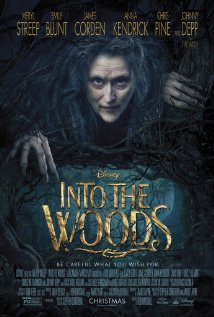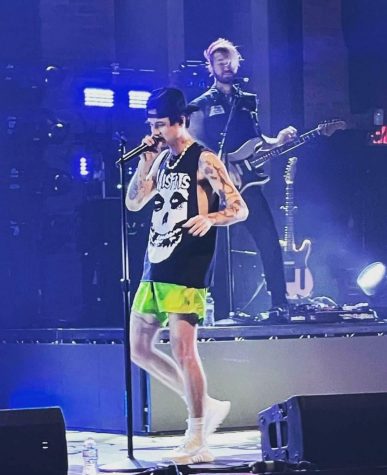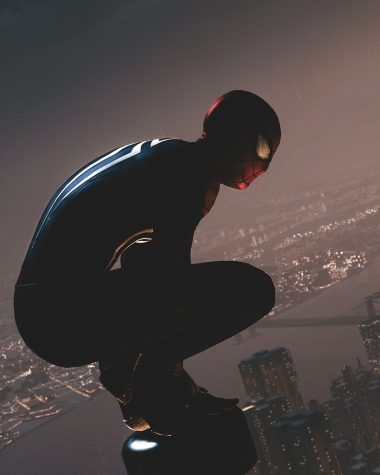Into The Woods has audiences running out of the theater

When the first trailer for the would-be dark fantasy smash hit Into the Woods premiered, the Internet predictably freaked out in anticipation. Theater lovers nervously awaited the silver screen adaptation of the much beloved Stephen Sondheim musical.
However, when it hit theaters on Christmas Day, the box office hit was a cinematic miss. Yes, the movie still got nominated for many awards. Yes, it boasts a widely acclaimed cast. Yes, the lines into the theater on opening night proved that talented star-studded casts can draw huge crowds. Regardless, Into the Woods only impressed on paper.
The film opens with characters singing about what they “wish” for the most. For Cinderella (Anna Kendrick) it’s to attend the King’s festival. Jack (Daniel Huttlestone) (of Jack and The Beanstalk) wishes his cow, Milky White, produced milk. The Baker (James Corden) and his wife (Emily Blunt) wish, above all, to have a child.
Admittedly, the movie starts out strong. It had promise.
Like any true Disney movie, a villain will unfailingly pop up and set a myriad of obstacles that inhibit someone’s happiness. In this case, the baker and his wife. In order to reverse the curse placed upon the family tree when the baker’s father stole from the witch’s garden and be able to conceive, the couple must set out on a scavenger hunt to find ingredients for the witch (Meryl Streep).
She arranges a trade-off: bring back the necessary ingredients within three midnights, and they shall have the child of their dreams. Should they fail, they will never be parents.
Each ingredient is something other characters own: the cow as white as milk, the cape as red as blood, the hair as yellow as corn and the slipper as pure as gold. All must be acquired and given to the witch before midnight strikes three nights after beginning the quest.
Each story collides naturally and the songs, though maybe over-abundant, did not seem out of place and felt right in every scene. The collisions proved that the typical members of the fairy tales are not always what they seem when they interact. Chris Pines’ Prince Charming-not-Sincere proves exactly why these tales aren’t typically combined.
The film’s trailer, which constantly played on repeat on practically every channel leading up to the movie’s release, upped the hype though it was slightly misleading. Notably, Johnny Depp’s Big Bad Wolf gave the impression that he had a much larger role than he actually did.
Oddly, Depp’s character had a measly five to ten minutes of screen time—most of which were filled by a perverse, traumatic musical scene in which he sings to Red Riding Hood (Lilla Crawford), portraying a character reminiscent of a cannibalistic sexual predator, after which he eats both Red and her granny (Annette Crosbie) until The Baker saves them.
There was no lack of talent regarding the cast’s vocals—every singer had the chops to carry every tune. From Oscar-winner Meryl Streep, whose chops were evident, to the lilting voice of the lovely Anna Kendrick, the movie was undoubtedly acoustically pleasing.
It seemed as though the actors and characters weren’t one. The acting didn’t feel natural; it felt as though the actors attempted to fit a well-known character into the molds of these strange hybrids. Though they sounded great, the songs did not feel at home in the film. They felt overlaid onto the actual movie and lacked inflection and emotion.
The exception to this was Rapunzel’s Prince (Billy Magnussen) and Prince Charming’s sing-off over the “Agony” they feel over their forbidden loves. Both princes try to out-macho each other, providing hilarity that had the entire theatre in tears (literally). Pines and Magnussen’s melodramatic whining as the love-sick princes was most definitely a high point in the film, but the laugh-factor felt more akin to that of a stand-up comic who dramatically tries too hard for comedic effect.
Beautiful backdrops accompanied every scene. As the film progressed every backdrop grew darker, almost foreshadowing the twist ending. The costume and set design departments deserve major props in successfully converting every cast member into the epitome of their characters.
Anna Kendrick’s Cinderella brought a different princess to life—this time, the feminist type. Specifically during the scene where she flees from the prince, director Rob Marshall and writers James Lapine and Stephen Sondheim spin a twist on the usual fleeing scene. Instead of leaving her slipper behind by accident to avoid being caught, Cinderella decides to leave a clue for the prince and chooses to let him chase after her. She enables the prince to find her through her own actions—not through fate. Her “take charge” actions are a refreshing addition to the usual helpless princesses typically associated with Disney.
As the infamous witch, Streep proved that bad movies happen to good people. Though her portrayal was as good as it could have been, Streep carried the entire movie on her back, and the less than stellar acting of her castmates dragged down the quality of the whole film.
Stephen Sondheim’s would-be smash hit Into the Woods leaves fans running out of the theater feeling disillusioned as beloved stories turn as dark, twisted and intertwined as the woods themselves. Though the film’s aim was for the stories to take on a new direction, changes felt forced and strange. The ending left many loose ends, though none that would merit a sequel.
Music-wise, the score was probably a highlight of the film with music perfectly tuned to the scene’s tone. It sounds like many of Disney’s other live action films, though it had darker undertones to match the film’s darker theme.
Into the Woods is rated PG, but certain scenes, like when the stepmother cuts off Cinderella’s stepsisters’ toes to make them fit in the slipper, were not gratuitous but they were gruesome. Younger audiences should not watch the film if they can’t handle death and bursts of violence towards the end of the film.
For a movie as over-hyped as Into the Woods, viewers leave the theater questioning everything they know about fairy tales. In the middle of the film, a happy ending seems evident. That would-be ending felt much more at home in a Disney movie than the twist-conclusion that made the final cut.
Into the Woods did include impressive morals about family and what is truly important in life. At the end, viewers learned that “no one is alone” through a touching group musical number that was probably one of the best numbers in the entire movie.
The film was approximately two hours long, though it could have been much shorter and still successful. Many movie-goers reported falling asleep towards the middle as it did start to drag after a while, grappling to try to keep audiences interested. For a film that was so long, it had expendable characters. Rapunzel (Mackenzie Mauzy) and her prince did add an interesting love story to the plot, but ultimately it was unnecessary and felt like it was included only as a nod to the original musical.
The twist(ed) ending leaves viewers feeling cheated as a dark and unhappy ending does not, in this case, equate to a good one. Into the Woods had fans running to buy tickets but ultimately running out of the theater disappointed.




